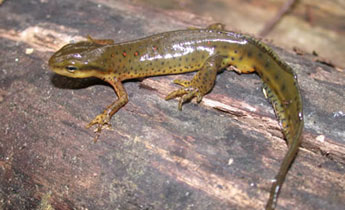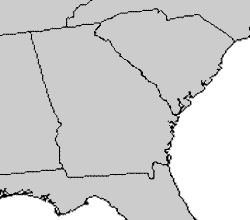Red-spotted Newt (Notophthalmus viridescens)



Photos by J.D. Willson unless otherwise noted
| Salamandrids are collectively known as the “newts,” a term which often breeds some confusion — as in “What is the difference between a salamander and a newt?” The simple answer is nothing: a newt is simply a specific type of salamander, namely members of the family Salamandridae. In other words, all newts are salamanders, but not all salamanders are newts. The newts have an extremely wide distribution, as they are found in North America, Europe, Asia, and even portions of northern Africa. They are known for a diversity of shapes and colors, especially among the males of the European species during the breeding season. In North America, however, there are only two genera, and only one of them, Notophthalmus, is found east of the Mississippi River. What it lacks in diversity, it makes up for in generality, for Notophthalmus can be found just about everywhere in eastern North America. The red-spotted newt is more or less ubiquitous throughout eastern North America. The usual life cycle of this species includes three distinct post-hatching stages: (1) aquatic larva, (2) terrestrial (juvenile) eft, and (3) aquatic adult. In some populations, larvae may skip metamorphosis and become paedomorphic adults (like Ambystoma talpoideum), but this is apparently rare for the newts in the Southeast. Efts have slightly rough, dry skin and are bright orange or red, and sometimes even brownish, in color. Once they complete the second metamorphosis to become aquatic adults, their skin changes from orange or red to yellowish-green. Nonetheless, they retain small red spots within black halos found in rows along the sides. These spots, and the efts coloration, are warnings of toxic skin secretions. Because of this chemical defense, newts can coexist with fish, which often eat other salamanders. |
